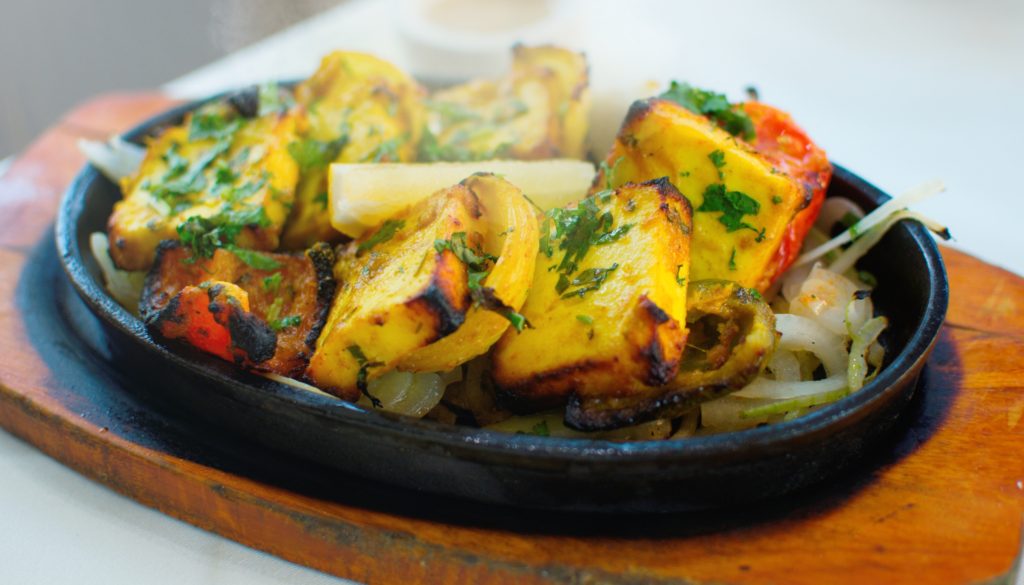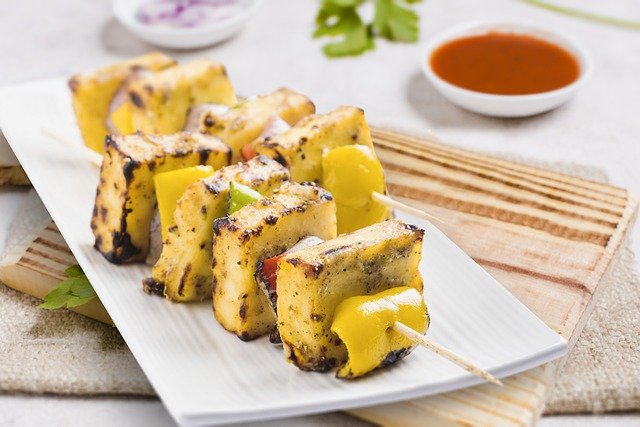How to make paneer at home – check out the recipe
Paneer is also known as cottage cheese. It is prepared by curdling heated milk. Paneer is considered to be the best source of protein. For non-meat eaters or vegetarians, this is a common source of protein and therefore, paneer curries are often found in Punjabi and North Indian cuisines. In fact, in 5 out of 10 options of the vegetarian menu in an Indian restaurant, paneer is a must.
How to make paneer at home?

Paneer is cottage cheese that is prepared by curdling heated milk. There are two options of curdling the milk either with vinegar or with lemon juice. You can use yogurt as well for curdling. Once it is curdled the right way, collect it in a piece of muslin cloth and let it set until it becomes firm. This is the easiest way to make paneer at home. If you are wondering how to make paneer, you can definitely check out this recipe.
Read More: PASSOVER SALAD RECIPE – MOROCCAN QUINOA CARROT SALAD | How to make a pizza at home without oven
Paneer is used in a number of Indian curries and the most popular ones are palak paneer, matar paneer, kadai paneer and so on.
Why to make paneer at home?
You may think why to make paneer at home if you can buy it from stores. In India, it is easy to get paneer from outside stores. But in other countries, it is difficult to get. In fact, if you are looking for tasty and fresh paneer, then preparing it at home is the best option. Homemade paneer has a number of advantages such as –
- Homemade paneer is always fresh and preservative-free
- You can make fresh paneer at home using good-quality milk
- Homemade paneer is super soft and tasty as well
Now if you are wondering how to make paneer at home, check out this step by step guide and get to know the easy process of making fresh paneer at home. So, now let’s check out the details below –
Step by step process on how to make paneer from milk
For making paneer at home, you just need only two things – milk and curdling agent
- Milk: For best results, you can use whole milk. You can prepare paneer from any type of milk but if you are looking for nice paneer cubes, then using whole milk is the best option.
- Curdling option: For milk curdling, you can use either vinegar or lemon juice. If you want, you can use yogurt as well. Some people prefer to use vinegar for getting firm block and super delicious paneer at home.
By making fresh panner at home, you can prepare different types of desserts or sweets such as rasmalai, rasogolla, and so on. Homemade paneer are super soft and therefore, they are mostly preferred for making desserts. The process of making paneer at home is very simple. You just need to boil the milk and then add curdling agent into it until the milk starts separating.
Also Read: Eat Vitamin B12 rich food to build strong immunity against Coronavirus | Take your partner on a romantic dinner date at these 15 best romantic restaurants in Kolkata
Once it is separated completely, use a muslin cloth to drain water and then collect the paneer. Let it set for some time until it becomes firm. There are a few things that you can use such as – mortar & pestle, cast iron pan, can of beans, heavy books etc.
Now let’s check out the method below –
Method of how to prepare paneer at home
- Add milk to a heavy bottom and put it on medium flame
- Once the milk come to boil, you should stit it most often so that it does not get stick to the bottom of the pan
- Once the milk comes to a boil, turn off the heat and start adding vinegar or lemon juice gradually
- At one point, when you observe that the milk is curdling and see the whey is separating, stop adding curdling agent to it and wait for five minutes so that the milk curdles properly.
- Now it’s time to drain the milk on a muslin cloth
- Rinse it in cold water so that it does not have any taste of vinegar
- Squeeze the muslin cloth as much as you can
- Flatten the paneer on a flat plate and place a heavy object on it so that it can take a shape
Once the paneer is set, remove it from the muslin cloth and cut into nice cube shapes and add them into your favorite paneer dish.
Paneer is one of the healthiest recipes. Both vegetarians, as well as non-vegetarians, love to eat various types of paneer dishes such as butter paneer, palak panner, paneer do-pyaza and so. In almost all restaurants, paneer recipes are quite common.
Read More: Take your love on a date in these 10 most romantic restaurants in Gurgaon | PASTA PLUS SEAFOOD: 5 Sumptuous Seafood Pasta Dishes to Try!
Frequently Asked Questions
1. Is it possible to make paneer from spoiled milk?
Answer: No. Making paneer from spoiled milk is unhealthy. Rather you should use fresh milk for making paneer like pour milk in a milk pan and boil it on a medium flame. You can use vinegar or lemon juice for curdling purposes. However, using lemon juice can give you the softest paneer. Once you notice the milk starts curdling, turn off the flame.
3. Is it a cheaper option to make paneer at home?
Answer: Yes, making paneer at home is a cheaper option. Moreover, by making panner at home, you can get fresh, tasty, smooth, creamy and preservative free paneer.
4. Is it possible to make paneer from curd?
Answer; There are three different types of acids that you can use for making paneer at home such as vinegar, lime juice, and yogurt. Adding vinegar will give the firm block of paneer.
5. Is hung curd and paneer same?
Answer: Hung curd is basically a curd that has been drained completely. Hung curd is used in a number some Indian recipes like marination of paneer tikka.
6. Is paneer a healthy option for health?
Paneer is a rich source of calcium and it strengthens teeth and bones. Apart from this, the consumption of calcium helps in smoothening the nervous system and helps to stay healthy.
Read Also: Burger King stays open without power or water for hours before closing
Top 20 lip-smacking street foods in India you should try at least once in a life










